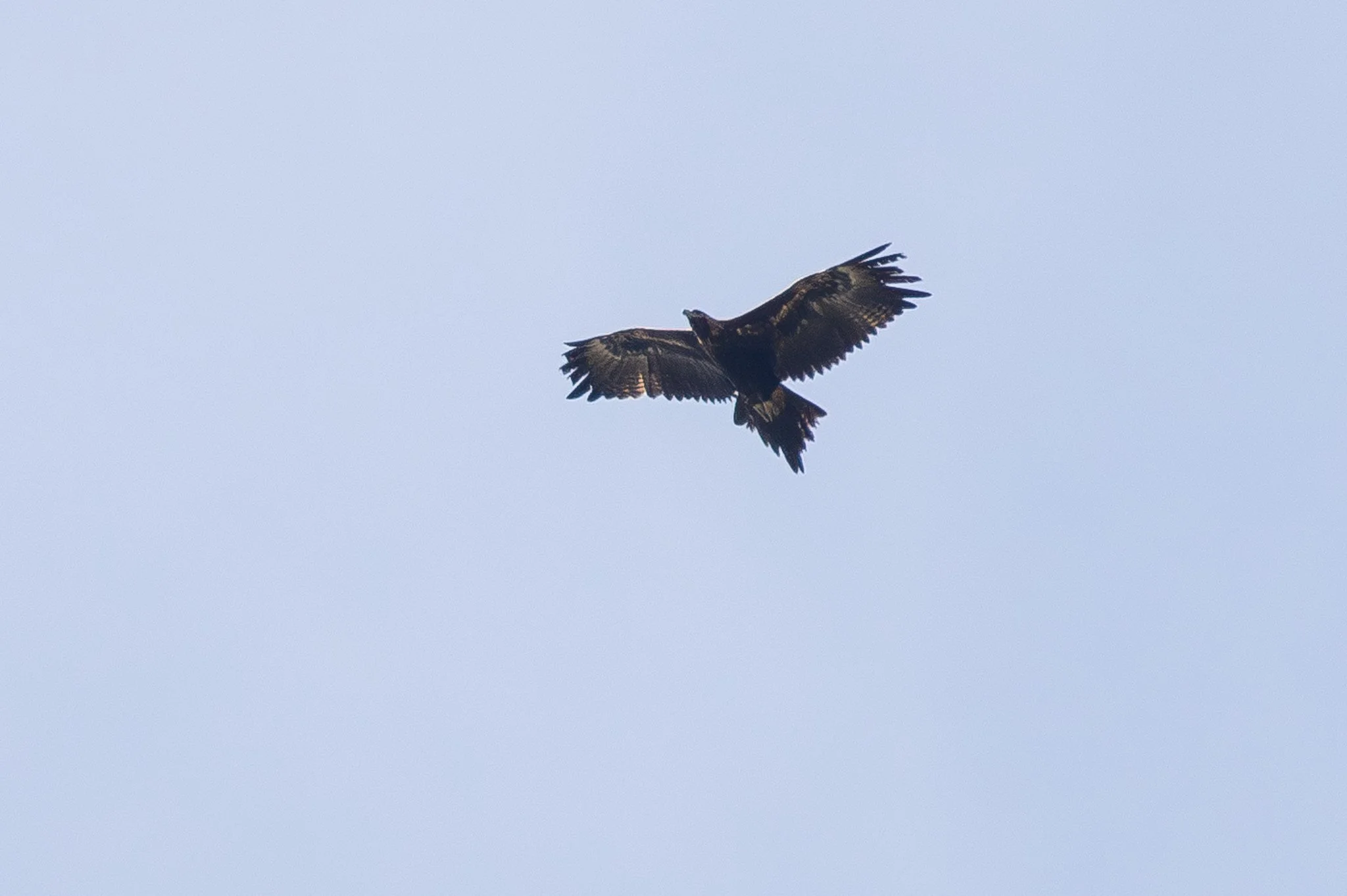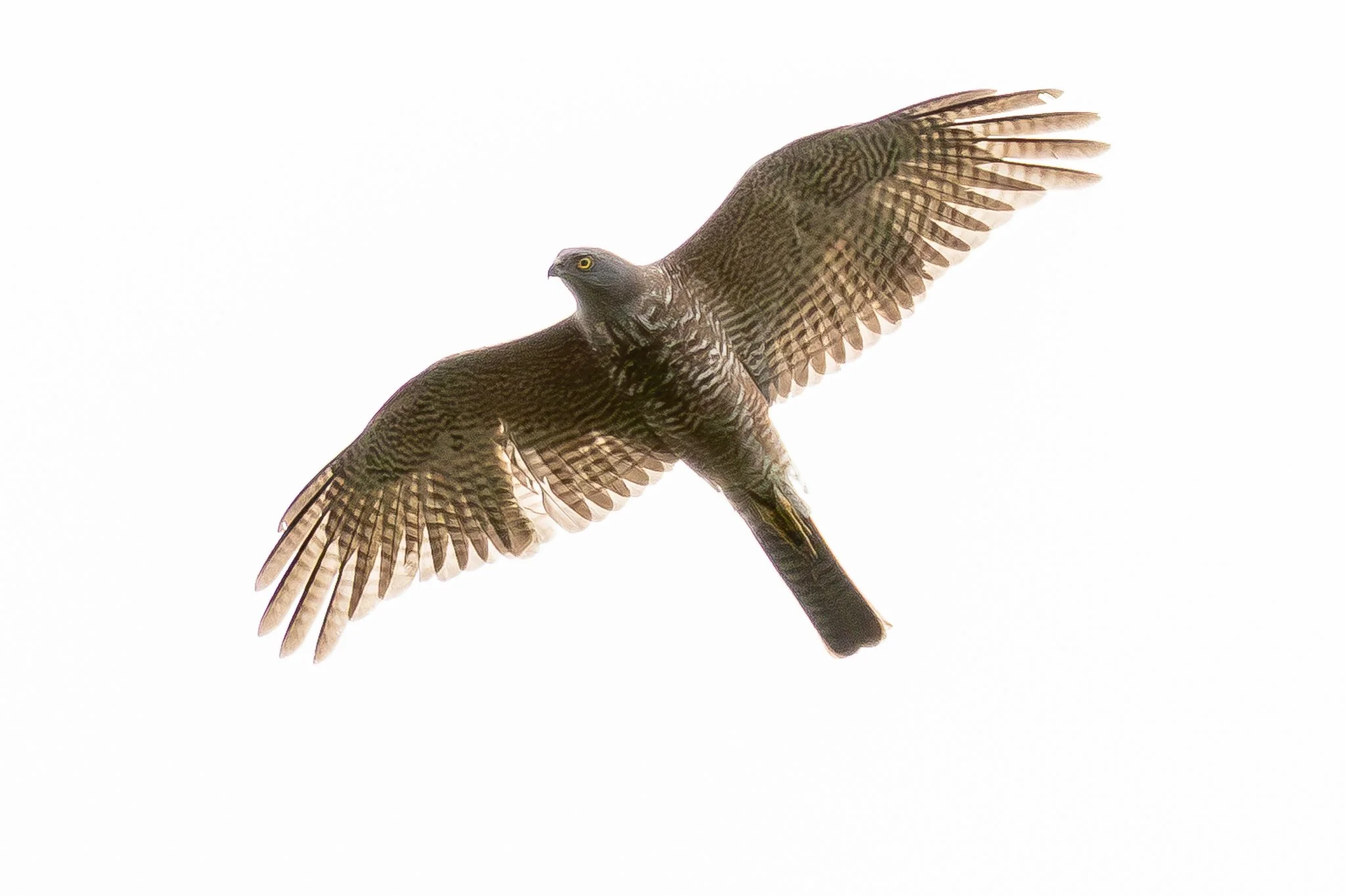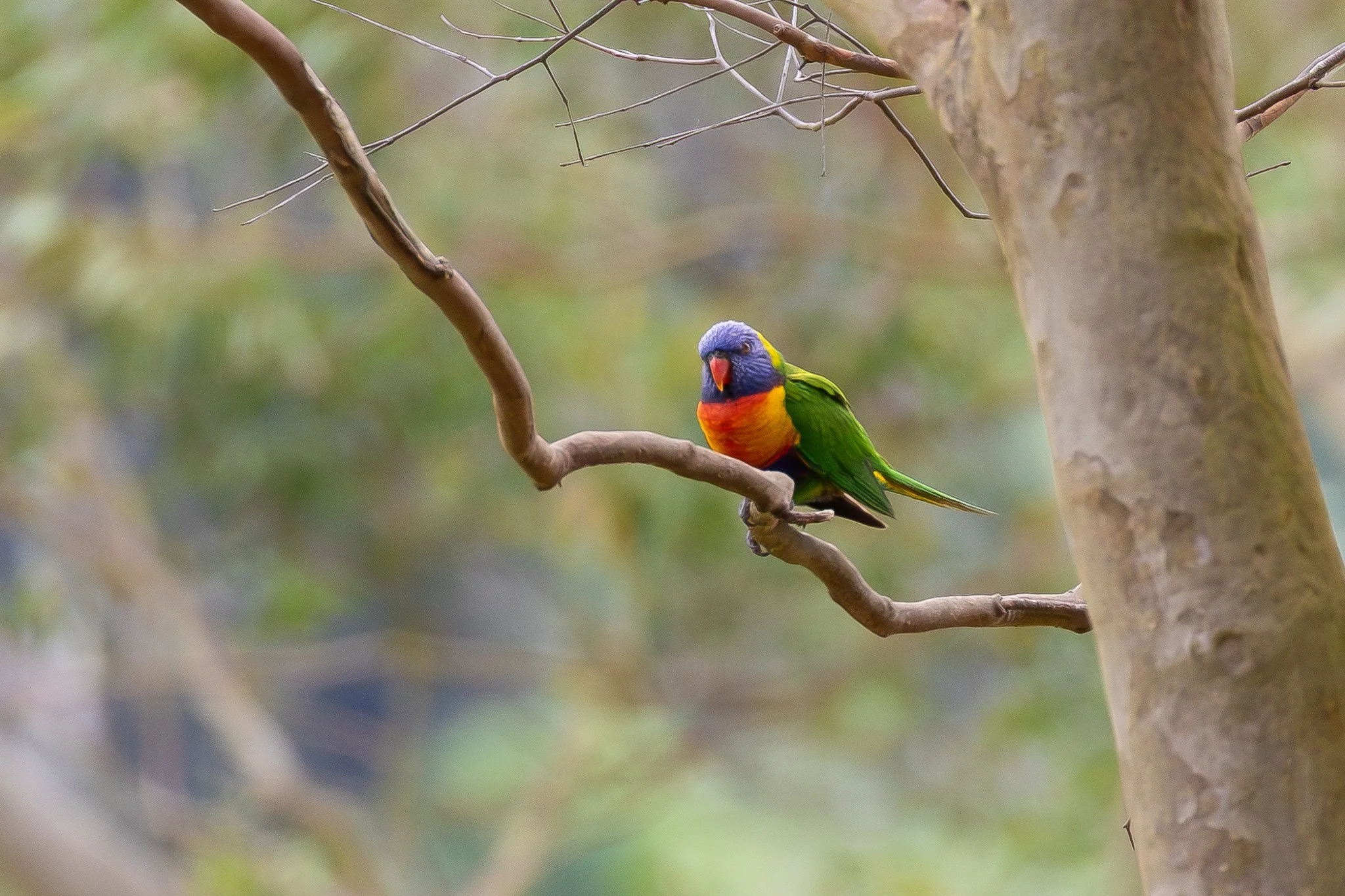Back to the area that was surveyed two weeks ago and there was more raptor action at the site, with six species of diurnal raptor seen. In addition there were nest boxes containing mating pairs of Barn Owls for the evening shift. Analysis of the owl scats (pellets) show that they are mainly eating Black Rats and mice.
Photographs of this Shining Bronze-Cuckoo taken by other surveyors showed it had a green crown, indicative of the New Zealand sub-species. Closer examination showed other features that also pointed to this bird being the New Zealand Shining Bronze-Cuckoo (Chalcites lucidis lucidis) which winters in the Solomon Islands and New Britain then migrates south to breed in the New Zealand summer. Some of these birds take a route down the Australian east coast during August to November and the bird photographed appears to be one of them. The Australian subspecies does not show this migratory behaviour.
Always an impressive sight, the Wedge-tailed Eagle.
The Grey Goshawk. It looks like this is a young bird although it could possibly be the white version of the Grey Goshawk (the White Morph)? Both Grey and White morphs of this bird are seen in this area. It is believed that the white version has developed so that the Goshawks can hunt undetected within a flock of white cockatoos.






